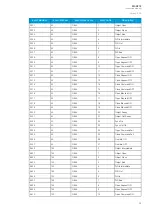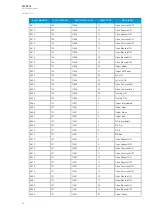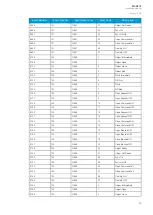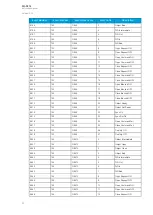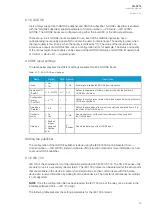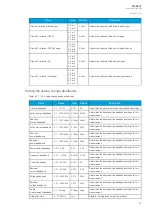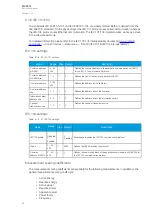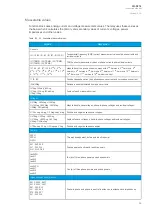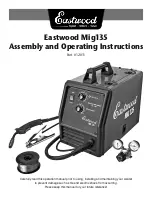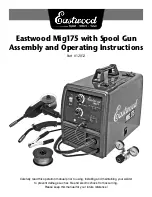
When the curve signal is out of range, it activates the "ASC1...4 input out of range" signal, which can
be used inside logic or with other relay functions. The signal can be assigned directly to an output relay
or to an LED in the I/O matrix. The "Out of range" signal is activated, when the measured signal falls
below the set input minimum limit, or when it exceeds the input maximum limit. The "Out of range"
signal is very useful when e.g. a 4…20 mA input signal is used (see the image below).
If for some reason the input signal is lost, the value is fixed to the last actual measured cycle value. The
value does not go down to the minimum if it has been something else at the time of the signal breaking.
Table. 5.2.6 - 26. Output settings and indications.
Name
Range
Step Default
Description
Curve 1...4
update cycle
5...10
000ms
5ms
150ms
Defines the length of the input measurement update cycle. If the user wants
a fast operation, this setting should be fairly low.
Scaled value
handling
0: Floating
point
1: Integer
out (Floor)
2: Integer
(Ceiling)
3: Integer
(Nearest)
-
0:
Floating
point
Rounds the milliampere signal output as selected.
Input value 1
0...4000
0.000
01
0
The measured input value at Curve Point 1.
Scaled output
value 1
-10
7
...10
7
0.000
01
0
Scales the measured milliampere signal at Point 1.
Input value 2
0...4000
0.000
01
1
The measured input value at Curve Point 2.
Scaled output
value 1
-10
7
...10
7
0.000
01
0
Scales the measured milliampere signal at Point 2.
Add
curvepoint
3...20
0: Not
used
1: Used
-
0: Not
used
Allows the user to create their own curve with up to twenty (20) curve
points, instead of using a linear curve between two points.
A
AQ
Q-S214
-S214
Instruction manual
Version: 2.04
75




